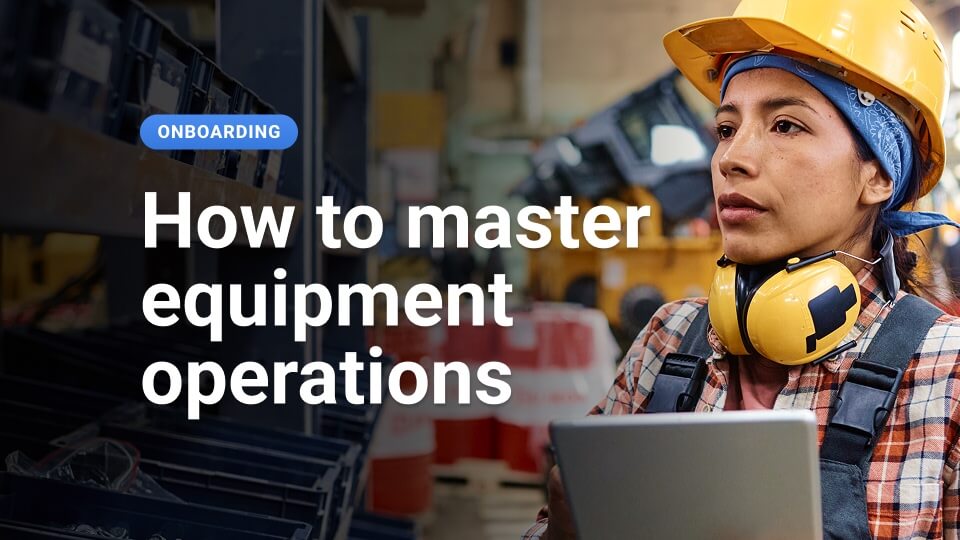
The landscape of employee skills and the requirements of the modern workforce are in a state of flux. A mere 29% of manufacturing workers currently possess the advanced skills necessary to adapt to changing technology. This alarming statistic sheds light on a broader trend across industries: a significant skills gap that is widening as technology evolves, at a time when the manufacturing sector faces a significant workforce shortage of over 1.5 million workers compared to pre-Covid levels.
The World Economic Forum has projected that by 2025, half of all employees will require reskilling. Despite this urgent need, many organizations are yet to put formal training strategies in place. This disconnect between the skills present in the workforce and those needed for future success poses a significant challenge for businesses aiming to remain competitive.

Employee Attitudes Towards Learning and Training
The mindset of employees towards learning and training is undergoing a transformation. In 2022, an overwhelming majority (80%) of manufacturing employees expressed a keen interest in acquiring new workplace skills. This indicates a growing recognition among employees of the value of continuous learning and skill development.
Moreover, a substantial portion of the workforce is actively seeking opportunities for upskilling. The preference for self-paced and on-demand learning highlights a shift towards more flexible learning models, catering to the diverse needs and schedules of employees.
The Demand for Dynamic and Technology-Driven Training
The dynamic nature of today's job market necessitates equally dynamic training solutions. The skills required for a job today are evolving at a rapid pace, with an estimated annual increase of 10%. This calls for training methods that are not only current but also adaptable to future changes.
Online learning platforms emerge as a practical solution in this context. They have been shown to enhance learning retention significantly, offering a more efficient and engaging learning experience compared to traditional methods. These platforms also align with the growing environmental consciousness, reducing energy consumption considerably, and for organizations with many distributed sites, online learning platforms can be the key to consistent training.
Measuring the ROI of Employee Training
Quantifying the ROI of employee training involves looking beyond immediate skill acquisition to broader impacts on employee engagement, retention, and overall productivity. Companies with strong onboarding and continuous training programs see marked improvements in new hire retention and productivity.

Employee satisfaction and loyalty are also deeply influenced by the availability of career development opportunities. Many employees cite a lack of such opportunities as a primary reason for leaving their previous jobs. This highlights the importance of training not just as a tool for skill development, but also as a key factor in employee retention and satisfaction.
Best Practices for Maximizing ROI in Training
To maximize the ROI from training programs, companies must adopt best practices that encompass modern learning technologies and methodologies. This includes recognizing and catering to the unique learning preferences of different generations within the workforce.
For instance, younger employees like Gen Z show a higher engagement in training programs when these programs include elements of recognition and personalization. Incorporating diverse learning styles and preferences into the training strategy is crucial for maximizing its effectiveness and ROI. Training platforms that allow for a high degree of personalization will be the most effective investment in training.
Today’s workforce is more diverse than ever. Organizations that prioritize training platforms that prioritize language inclusivity will see improved performance and productivity from their employees, and will drastically increase their pool of potential hires in the process.
In the realm of employee training, the integration of Diversity, Equity, and Inclusion (DEI) strategies holds immense potential for reshaping the workforce landscape. By committing to DEI-focused training programs, businesses can actively participate in creating a more equitable and inclusive professional environment. This approach not only opens up hundreds of thousands of job opportunities for people of color but also significantly enriches the pool of qualified candidates from which businesses can draw.

More crucially, it addresses the longstanding issue of underrepresentation in many sectors, fostering a work culture where diverse perspectives and backgrounds are not only acknowledged but also valued. This strategic shift towards DEI in training goes beyond mere compliance; it reflects a deeper commitment to nurturing talent from all walks of life, thereby promoting parity and equity in professional spaces. Such initiatives, when embedded in the core training methodologies, can lead to a more diverse, innovative, and competitive business environment, truly reflecting the richness of the society we live in.
In the past, employees typically spent the first weeks or months of a new role training, but now, just-in-time training is often the more effective approach. Organizations that balance the right level of onboarding and training as it is needed will benefit from a more engaged workforce.
The Optimal Solution for Modern Training Needs
DeepHow stands out as the ideal solution for the modern training needs of businesses. The AI-powered platform revolutionizes the learning experience, providing an interactive, engaging, and highly effective training environment.
DeepHow’s platform excels in several key areas:
- Personalization: DeepHow's AI-driven platform tailors the learning experience to individual employee needs, enhancing engagement and effectiveness.
- Dynamic and Up-to-Date Content: The platform's ability to rapidly update training content ensures that learners always have access to the most current and relevant information.
- Engaging Learning Modules: By utilizing video-based training, DeepHow taps into the proven effectiveness of visual learning, significantly boosting knowledge retention.
- Mobile Learning: Recognizing the shift towards mobile learning, DeepHow offers a flexible solution that caters to modern learners' preferences for learning on-the-go.
- DEI Support: DeepHow supports a diverse and inclusive learning environment, aligning with modern organizational values and enhancing the learning experience for all employees.

DeepHow’s innovative approach to employee training ensures that organizations can achieve a substantial ROI by enhancing employee skills, satisfaction, and productivity. It's not just a training platform; it's an investment in the future success of your workforce.
Our customers have proven this: by investing in training, Anheuser-Busch has seen an 80% reduction in time to proficiency for new employees, a difference of nearly 14 months. Like many manufacturers, employee turnover is a new challenge as millennials and Gen Z workers occupy the majority of the workforce. The need to quickly improve and digitize their training materials was critical, and with DeepHow, they were able to do so quickly and efficiently with minimal downtime.
Investing in employee training is no longer just an option but a necessity for businesses aiming to thrive in today's dynamic market. With the right approach and innovative tools like DeepHow, companies can transform the challenge of continuous learning into an opportunity for growth, innovation, and sustained competitive advantage.










